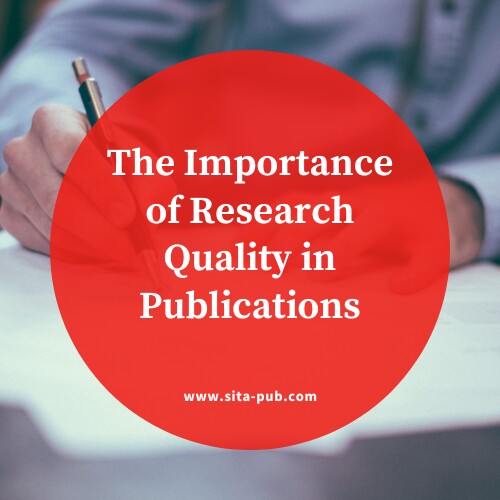The Importance of Research Quality in Publications


Publishing research is a key part of academic life. It helps share knowledge and contributes to your field. However, to get published, your research must meet high standards. This means both the scientific quality and the technical details matter.
Research quality refers to how well your study is designed, executed, and reported. High-quality research is clear, reliable, and valid. It should answer important questions and contribute to existing knowledge. To achieve this, you need to focus on several aspects, including the methodology, data analysis, and conclusions.

Clear Objectives: Start with clear research questions or objectives. This helps guide your study and keeps it focused. Your goals should be specific and relevant to your field.
Strong Methodology: The methods you use to conduct your research are crucial. A well-designed study uses appropriate techniques to collect and analyze data. This increases the reliability of your findings.
Thorough Data Analysis: Once you collect data, analyze it carefully. Use the right statistical tools and ensure your conclusions are supported by the data. This strengthens the validity of your research.
Transparent Reporting: Clearly report your methods and findings. Others should be able to understand how you conducted your research and how you reached your conclusions. Transparency builds trust in your work.
While research quality is essential, technical details also play a significant role in the publication process. Journals have specific guidelines for formatting papers. These guidelines cover everything from citation style to the structure of the manuscript. If you do not follow these guidelines, your paper may be rejected, regardless of its quality.
Proper formatting is critical for acceptance. Each journal has its own requirements, including font size, margins, and reference style. Here are some tips to ensure your paper is formatted correctly:
Read the Guidelines: Before submitting, carefully read the journal’s submission guidelines. Note the required format and follow it closely.
Use the Right Structure: Most research papers follow a standard structure: introduction, methods, results, discussion, and conclusion. Make sure your paper fits this structure.
Cite Sources Properly: Use the citation style required by the journal. Accurate citations not only give credit to other researchers but also show that you have conducted a thorough literature review.

By handling both the scientific quality and the technical details of your paper, you will maximize your chances of acceptance. Here’s how to do it:
Focus on Quality: Ensure your research is of high quality. Use clear objectives, strong methods, and thorough analysis. This will make your paper more credible.
Pay Attention to Details: Follow the journal’s formatting guidelines precisely. Double-check your references and make sure everything is in order.
Seek Feedback: Before submission, ask colleagues or mentors to review your paper. They can provide valuable feedback on both content and format, helping you make necessary improvements.
Revise and Improve: Be open to making changes based on feedback. Revising your paper can significantly enhance its quality and increase your chances of acceptance.
Once you submit your paper, it will undergo peer review. This process involves experts in your field evaluating your work. They will assess its quality and relevance. A strong, well-formatted paper is more likely to receive positive reviews. Reviewers appreciate clear, concise writing and adherence to guidelines.
In summary, both research quality and technical details are crucial for successful publication. High-quality research answers important questions and contributes to your field. At the same time, following the journal’s formatting guidelines is essential to avoid rejection.
By focusing on both aspects—ensuring your research is robust and your paper is well-formatted—you can significantly improve your chances of getting published. Take the time to polish your work and pay attention to detail. Doing so will not only benefit your academic career but also help advance knowledge in your field. Remember, a well-prepared submission reflects your dedication and professionalism as a researcher.
Use SITA Academy's formatting services. Our team will ensure your research paper follows all journal guidelines and is well-prepared. By addressing both the quality of your research and the technical details, you can submit your work with confidence. Don’t let formatting issues hold you back—contact SITA Academy today to learn how we can assist you in achieving your academic goals!
If you have any questions, inquiries, or would like to learn more about our services, please don't hesitate to reach out to us. Our dedicated team is ready to assist you.